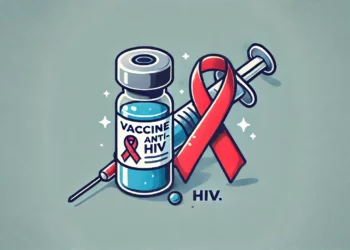New research on mice is paving the way against the human immunodeficiency virus (HIV), the cause of AIDS.

Although the team did not manage to completely eliminate the virus from all the mouse hosts, they showcase an effective way of engaging with it. According to the results, the approach eliminated the virus from 40% of the mice used in the study. With more work to perfect it, such an approach could one day form the basis of an effective and reliable treatment against HIV.
Cornerstone
Currently, people infected with HIV have the option of using antiretroviral therapy to slow down the virus’ progression. However, we have no way to attack the pathogen and clear it out of a victim’s body. HIV can infect human immune cells — helper T cells, or ‘CD4+ T’ cells, to be precise — and lay dormant within them. Although our bodies have the ability to destroy HIV, this process leaves it hidden and protected from our immune response — because it’s in the cells that largely direct that response.
Any effective strategy against the virus, then, should start with forcing the virus out of hiding. This is the first part of the so-called “kick and kill” strategy, which was piloted by the same researchers that led the present study — a team at the University of California, Los Angeles — back in 2017.
In the last few years, the team has refined their approach. In 2017, they were able to clear HIV from 25% of the mice they worked with; in the present study, they report eliminating it from 40% of the mice, an almost double success rate.
The process involved first administering antiretrovirals to the mice, together with a synthetic molecule known as SUW133. This duo forces HIV out of the cells it is hiding in throughout the body. SUW133 in particular works to activate the virus in infected cells; up to one quarter of infected cells died during the time SUW133 forced this activation process to happen, the team explains.
The next step consisted of giving the treated mice injections with natural, healthy cytotoxic T white cells, which would go on and kill infected cells and virus particles.
In order to test the effectiveness of their approach, the team investigated the spleens of each mice. This organ is a common hiding place for HIV-positive cells. If no HIV was detected here, the team concluded that it had been successfully eliminated from the animal’s body.
The team notes that the compounds above worked better in combination than they did when administered independently.
Their goal for the future is to eliminate HIV from all the mice in their experiments and then progress their research into the preclinical stage by performing the same procedure on nonhuman primates, which better resemble human biology.
As of 2020, 38 million people worldwide are infected with HIV, and almost 36 million have already lost their lives to AIDS and related complications.
The paper “Latency reversal plus natural killer cells diminish HIV reservoir in vivo” has been published in the journal Nature Communications.






